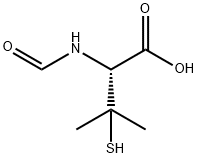Hydrazine standard solution , analyticalstandard,1000μg/mlin1.0mol/LHCl , 302-01-2
CAS NO.:302-01-2
Empirical Formula: H4N2
Molecular Weight: 32.05
MDL number: MFCD00011417
EINECS: 206-114-9
PRODUCT Properties
| Melting point: | 1,4°C |
| Boiling point: | 113.5 °C |
| Density | 1.011 g/mL at 25 °C |
| vapor density | >1 (vs air) |
| vapor pressure | 5 mm Hg ( 25 °C) |
| refractive index | n20/D 1.47(lit.) |
| Flash point: | −4 °F |
| storage temp. | 2-8°C |
| solubility | very soluble in H2O, ethanol,methanol |
| form | Liquid |
| pka | pK1 (25°): ~6.05 |
| color | Clear colorless |
| Odor | Fishy or ammonia-like odor detectable at 3 to 4 ppm (mean = 3.7 ppm) |
| explosive limit | 99.99% |
| Water Solubility | miscible with H2O and the following alcohols: methyl, ethyl, propyl, isobutyl [MER06] |
| Merck | 13,4789 |
| BRN | 878137 |
| Exposure limits | TLV-TWA (skin) 1 ppm (1.3 mg/m3 )
(MSHA and OSHA), 0.1 ppm (ACGIH). |
| Dielectric constant | 52.0(20℃) |
| Stability: | Stability May be an explosion hazard, particularly if heated. Incompatible with sources of ignition, light, shock, strong oxidizing agents, strong acids, metal oxides, nitrous oxide, hydrogen peroxide, most common metals, organic materials, porous materials such as wood, paper, asbestos, soil or rust. Many types of metal may cause rapid d |
| LogP | -0.16 at 20℃ |
| CAS DataBase Reference | 302-01-2(CAS DataBase Reference) |
| IARC | 2A (Vol. 4, Sup 7, 71, 115) 2018 |
| EPA Substance Registry System | Hydrazine (302-01-2) |
Description and Uses
Hydrazine sulphate, hydrobromide and hydrochloride have been reported to be occupational sensitizers, mainly in soldering flux.
Hydrazine is a highly reactive base and powerful reducing agent. It acts as an oxygen scavenger and is highly reactive with other chemicals. Hydrazine has a number of uses including, as a chemical precursor to blowing agents (e.g., azodicarbonamide and azobisisobutyronitrile), in the organic synthesis of pharmaceuticals and pesticides (e.g., isoniazid, fluconazole, and 3-amino-1,2,4-triazole), as a missile and rocket propellant (e.g., used in the F-16 fighter), as a gas-forming agent in air bags (e.g., sodium nitrite), as a corrosion inhibitor and reducing agent in large industrial boilers, and as a fuel source in fuel cells.
Safety
| Symbol(GHS) |     GHS05,GHS06,GHS08,GHS09 |
| Signal word | Danger |
| Hazard statements | H301+H331-H314-H317-H350-H410 |
| Precautionary statements | P201-P261-P273-P280-P301+P310+P330-P305+P351+P338 |
| Hazard Codes | T,N,F |
| Risk Statements | 45-23/24/25-34-43-50/53-10-51/53-36/37/38-20/21/22-19-11-36/38 |
| Safety Statements | 53-26-36/37-45-61-60-36/37/39-16 |
| OEL | Ceiling: 0.03 ppm (0.04 mg/m3) [2-hour] |
| RIDADR | UN 3293 6.1/PG 3 |
| WGK Germany | 3 |
| RTECS | MU7175000 |
| F | 10-21 |
| Autoignition Temperature | 24 °C on iron rust surface; 270 °C on glass surface |
| HazardClass | 8 |
| PackingGroup | I |
| HS Code | 28251090 |
| Hazardous Substances Data | 302-01-2(Hazardous Substances Data) |
| Toxicity | LD50 in mice (mg/kg): 57 i.v.; 59 orally (Witkin) |
| IDLA | 50 ppm |
| Limited Quantities | 1.0 L (0.3 gallon) (liquid) |
| Excepted Quantities | Not Permitted as Excepted Quantity |






